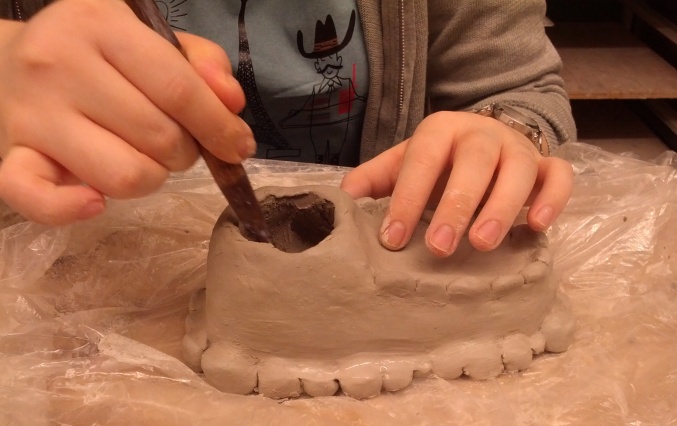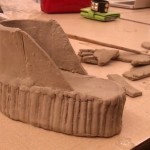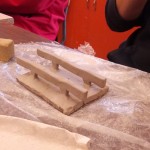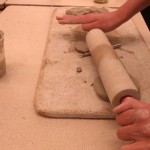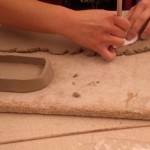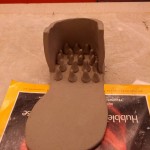
Today was the last day that the special needs class will work on their balloon pinatas. Many were finished or nearing finished. There were a couple of students who were still painting their balloons. I knew that they probably wouldn’t finish their balloons in time but that was OK. When they have free time, they can come back to their projects. I did lend the ones painting their balloons (the ones who were behind) a hand in painting theirs. I didn’t want them to not have anything to talk about. The working period was short today because I wanted a Show and Tell at the end of the class. Perhaps they aren’t used to talking about their work let alone their art and I wanted to give them a chance to share their work.
I had them clean up about 15 minutes earlier than normal to save time for the quick presentation. The class only consisted of about 12 students so it wasn’t going to take too much time. I had each student come up to the front and hold their balloon out. They flashed it around the room and waited for guesses to come in as to what the concept or main idea of their balloon is. It started out a bit slow as the first presenter was quite shy. I wanted to proceed with the presentation in the following manner:
Ask the class to guess what the concept of the presenter’s balloon is.
1. What is the concept of your balloon?
2. Describe why it looks this way (why did you choose those colours, designs, decorations?)
3. Are you happy with your balloon? What about it makes you happy?
4. Are there any changes you would like to make to your balloon?
5. Open up the discussion to the class. Do they have any suggestions?
After the first few students, I realized that they were quite happy with their balloons and would usually not have any suggestions of improvement. I decided to remove questions 2-5 for a couple of reasons. The first one being 1. They don’t seem to have any qualms about their balloon. They are usually quite happy about their product and 2. We didn’t have that much time to spend on each of their presentations. The bell rang with 2 students left to present but the class stayed regarldess to finish the presentations. I realize that sometimes teachers can go over time, especially with non-timed presentations. At least I got through most of them before the bell!
After the presentations were over, I told them that on Wednesday we would begin a new unit. This new unit involves glazing ceramic tiles with garden scenes. I had the help of my CS student to put together inspiration boards of garden plants and bugs. I hope they will enjoy this project! I only have them for about 6 more classes 🙁
The next class I taught was the Ceramics course. Today the students were introduced to Peer Assessment. They were given worksheets and were told to “interview” each other on their shoe concept. I made sure to be very clear on filling out their names up top and writing the name of the student who they assessed. I knew that it would take a lot longer than I expected so I gave them plenty of time. I collected those sheets that were done and gave those who needed more time time to work on theirs. I spent the rest of the time checking their sketchbooks and it took me to about the end of the period. The class worked very diligently and it was very surprising. The pairs that I arranged were meant to separate the friends and group people who normally don’t speak together. For the most part, it worked. It was nice to see them talking and this one particular student, who I normally have trouble with, seemed to work well today. The class was quite pleasant.
One thing that continues to bother me is the student who continues to step on my toes and not deliberately. The freedoms that she has been used to are gone and she doesn’t seem to understand that. In my class, you must respect my rules. Some difficulties I faced from this student include: not cleaning up after herself and disrupting the class during silent reading time. Once again, I had to tell this student that this behaviour was not acceptable. Sometimes they just need to be told that several times before they actually internalize it.
At the end of the day, I decided to talk to the head of the ELL department about my students. It turns out that she was actually having a private meeting with one of the trouble student’s mother. I believe they are quite aware of the situation I am facing with these students, but for me to touch base with several of the ELL teachers will only serve to benefit me and these ELL students in the long run. Hopefully a solution can be found soon.
